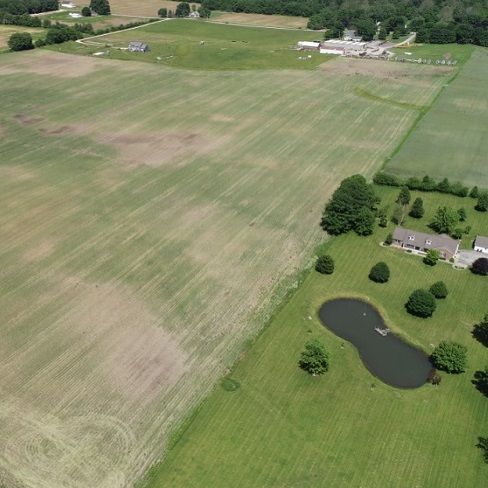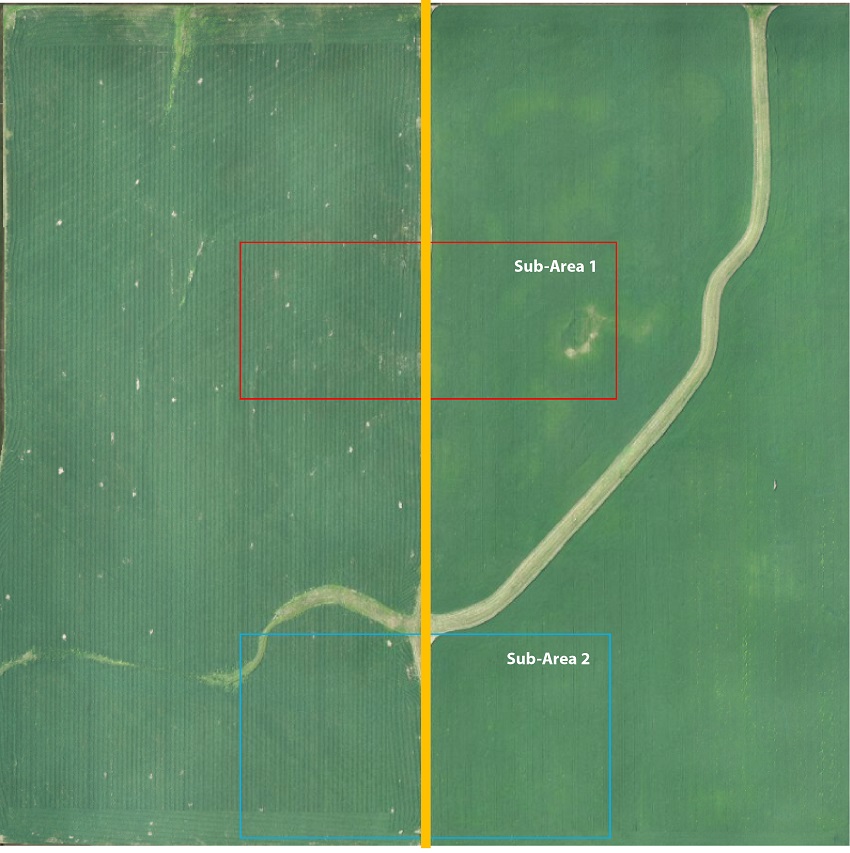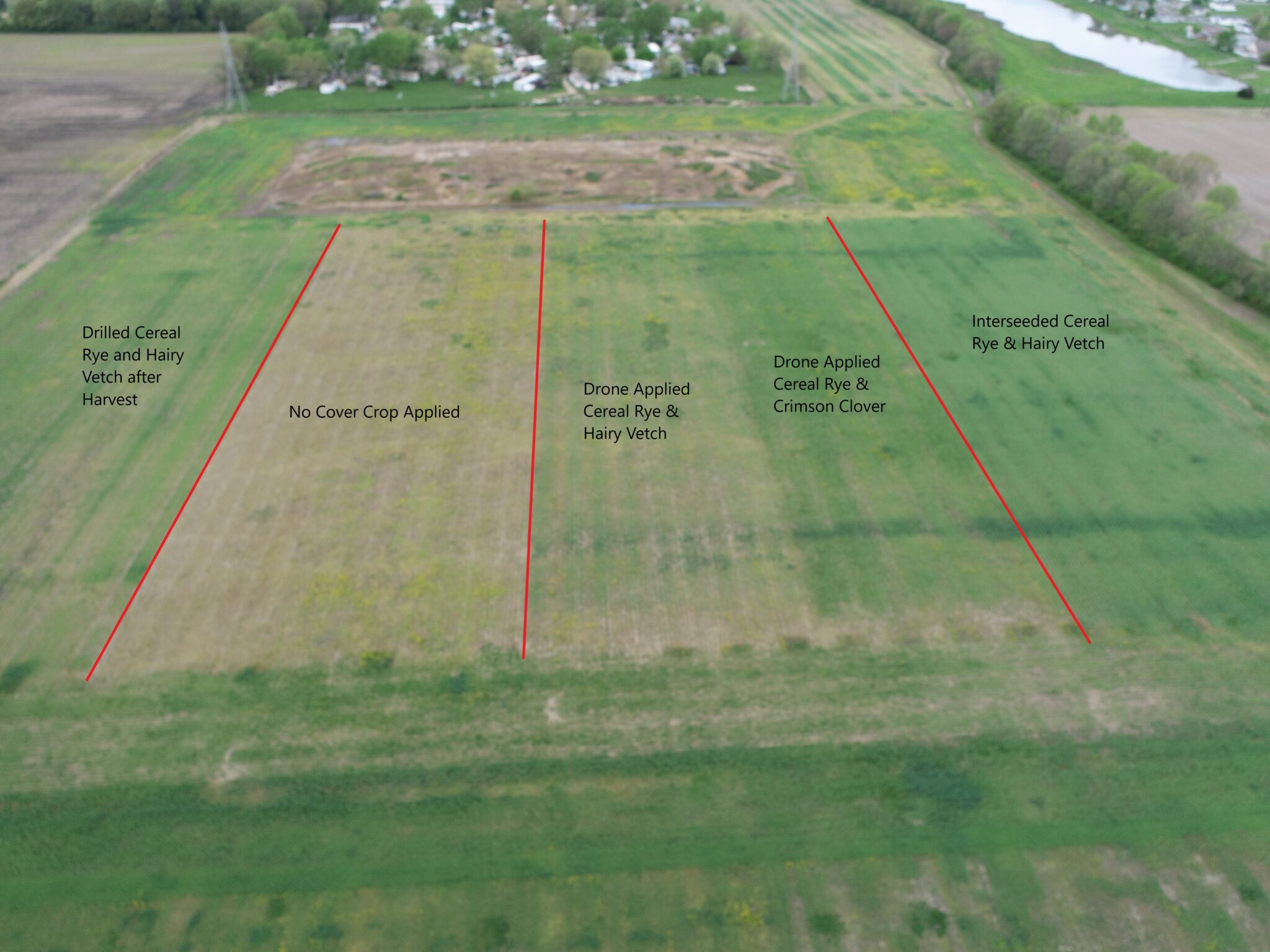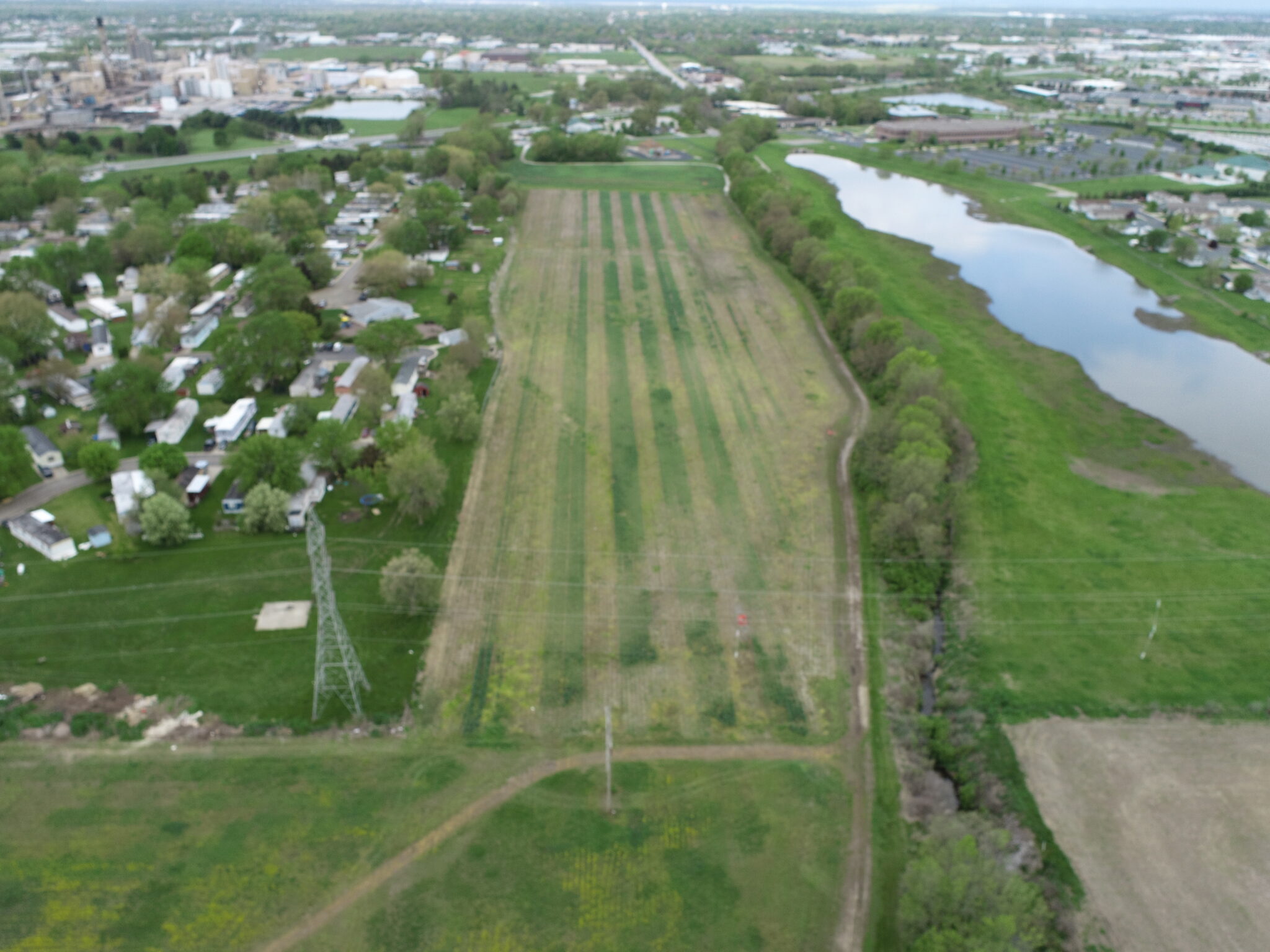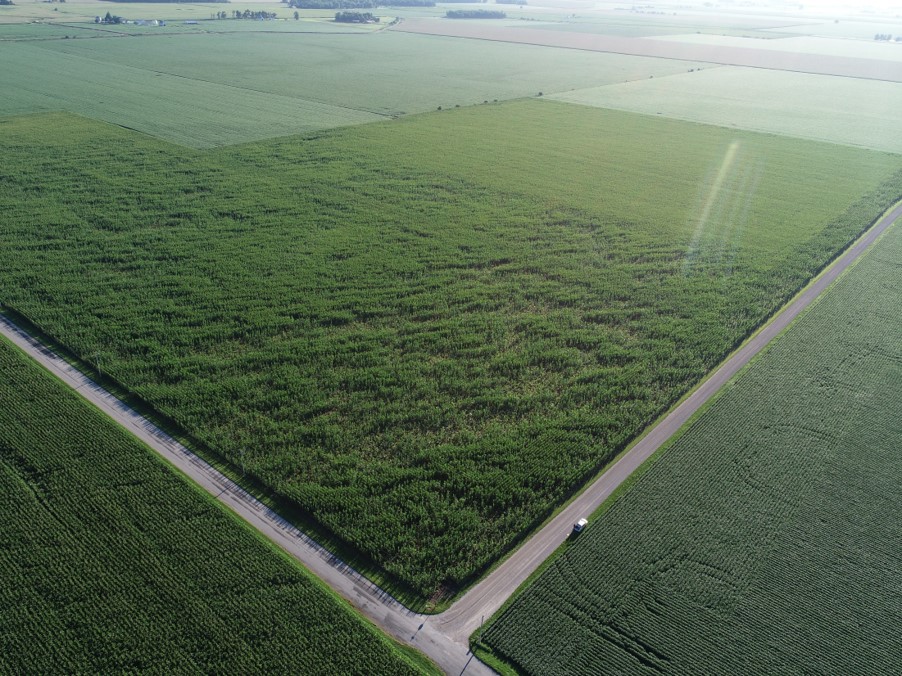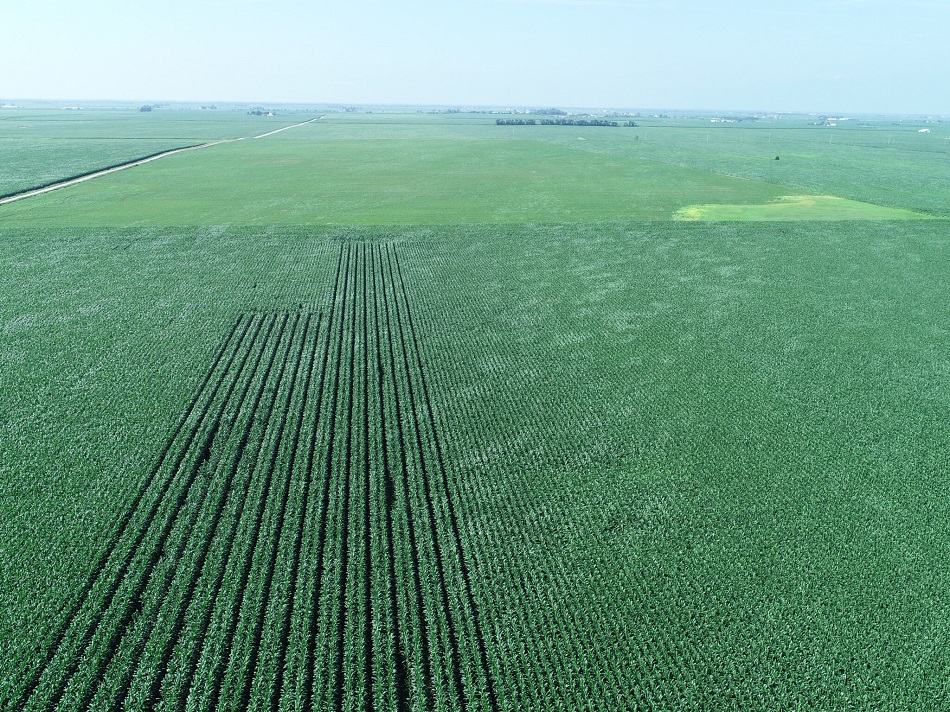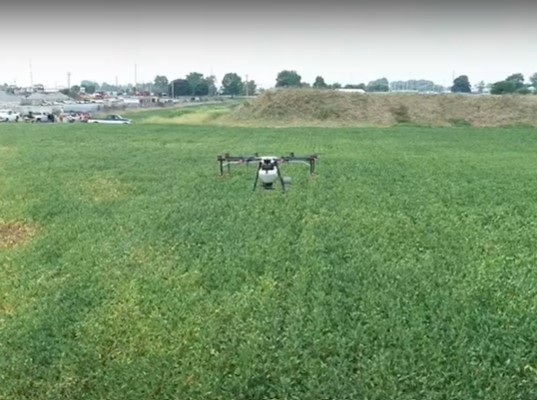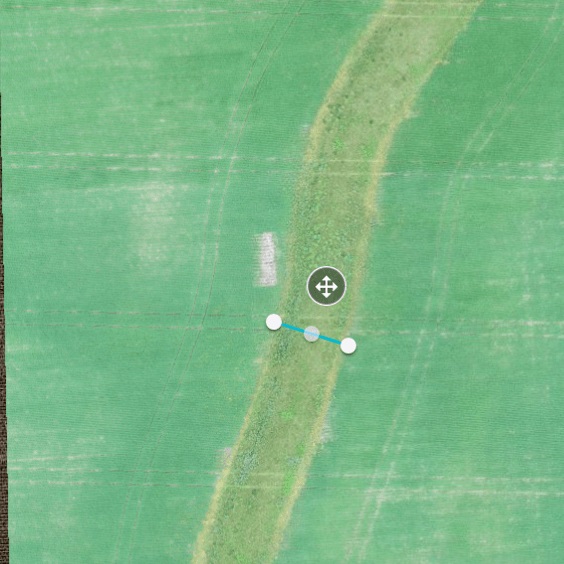In-field Conservation
UAV Benefits
- Quickly evaluate the impact of implemented conservation practices
- Map conservation structures and retain photographic record of performance. over time
- Quickly identify conservation system issues at a large scale in order to manage and mitigate environmental impacts
- Obtain photographic documentation of conservation field practices
UAV Challenges
Timing: Flying conservation systems, specifically cover crops, is done primarily outside of the growing season and requires time usually not spent in the field.
- Tip: Knowing when to fly in the fall, winter and spring is important. The best time to fly is with little to no other vegetation growing.
Clouds: Broken skies can ruin image quality.
- Tip: Fly when skies are fully overcast or clear for optimal image quality.
Camera settings: Incorrect settings can affect image quality.
- Tip: It takes a little experience. Familiarize yourself with general camera settings and know the goals of each particular flight.

